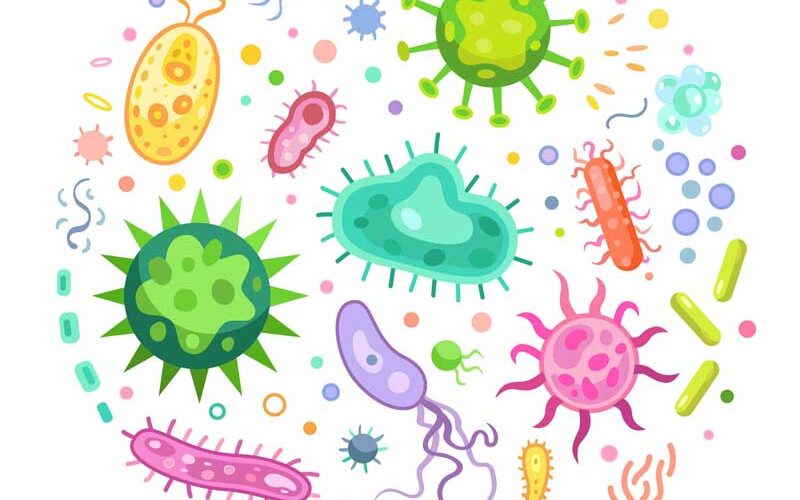What are bacteria?
Bacteria are minuscule, single-celled organisms. They have cell walls, which surround the cell membrane. In other words, cell walls protect cells from physical and chemical stimuli. If the cell wall is destroyed, the cell will burst and die. It also contains DNA and RNA, which are genetic materials, and proliferates through cell division. Bacteria can be classified according to their shape. The ball-shaped bacteria are classified as cocci, the rod-shaped ones as bacilli, the spiral-shaped ones as spirilla, and the coil-shaped ones as spirochetes. In addition, they have the characteristic of being able to survive in extreme environments, such as too cold or too hot places like glaciers or magma (Brazier, 2019).
What is the origin of bacteria?
When did bacteria start to exist?
When the Earth was created 4.5 billion years ago, there was no life on Earth. Over time, stromatolite photosynthesized and produced oxygen in the ocean (Brown, 2022). It led to bacteria evolving into mosses, then mosses into plants, creating life as we know it today.
How were bacteria first discovered?
In 1665, Robert Hooke discovered dead cells in cork using a microscope. Through this study, people learned about the existence of cells and have continued to study them. Anton van Leeuwenhoek discovered living bacteria in plants and published a theory that cells were produced from cells (Bellis, 2015).
What is the relationship between humans and bacteria?
What bacteria cause diseases in humans?
Bacteria can cause diseases that are harmful to humans, such as infectious diseases. Many people died from the plague and bacterial diseases, such as smallpox. In particular, diseases caused by bacteria are dangerous because they can be easily transmitted by air and contact. Diseases caused by these bacterial infections can be treated with antibiotics, but they can harm humans because they can be difficult to treat because bacteria that are resistant to antibiotics like tuberculosis exist (Parry and Peterson, 2020).
What are some bacteria that help humans?
Many bacteria coexist in the human body. We can benefit from these good bacteria, and they also have good effects. First, lactobacilli increase the immune response and protect the body. That’s why we can get lactobacilli from dairy foods, such as cheese. Second, Bacillus coagulans is effective in treating gastrointestinal disorders and improves the body’s immune response. Third, Bifidobacterium bifidum and breve solve the problem of constipation in children and have the advantage of treating diseases that may be caused by Helicobacter pylori (DiPardo, 2013).
Conclusion
The Earth was created, and photosynthesis produced the first bacteria. Since then, the existence of cells and bacteria has been confirmed by scientists, and this discovery has led to many experiments and theories. However, bacteria can provide harmful diseases to humans, but they, like lactobacilli, can help humans. That’s why we need to find and study ways to coexist with bacteria that help humans.
References
Bellis, M. (2015). Anton Van Leeuwenhoek – Father of the Microscope. [online] ThoughtCo. Available at: https://www.thoughtco.com/anton-van-leeuwenhoek-1991633 [Accessed 28 October 2022].
Brazier, Y. (2019). Bacteria: Types, characteristics, where they live, hazards, and more. [online] www.medicalnewstoday.com. Available at: https://www.medicalnewstoday.com/articles/157973 [Accessed 28 October 2022].
Brown, A. (2022). Ancient bacteria leave behind fossils, too! [online] Sciworthy. Available at: https://sciworthy.com/what-kinds-of-bacteria-live-in-fossils/ [Accessed 28 October 2022].
DiPardo, R. (2013). List of Good Bacteria. [online] Sfgate.com. Available at: https://healthyeating.sfgate.com/list-good-bacteria-7771.html [Accessed 28 October 2022].
Parry, W. and Peterson, E. (2020). 27 Devastating Infectious Diseases. [online] livescience.com. Available at: https://www.livescience.com/13694-devastating-infectious-diseases-smallpox-plague.html [Accessed 28 October 2022].
